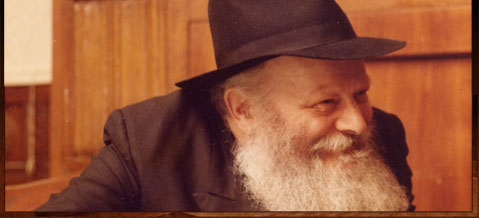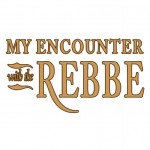Rabbi Doctor Elie Cohen
7 December 2023
It was a seven-day voyage from Tunisia to Montreal, and I was fifteen years old. For seven days all we saw was the sea, yet the boat traveled in a fixed direction the entire time. That’s how it is in life: Without a goal, you can go in all kinds of ways, and end up lost at sea. You’ve got to have a destination. With this thought in mind, I came to Montreal in 1957, looking for some direction.
Before long, I found what I was looking for. I began attending a class delivered by a young Lubavitch yeshivah student, and then learning Tanya with another. At the suggestion of the yeshivah boys, I began writing to the Rebbe in French. I wrote about my studies and my situation, including some difficulties I was having, and I asked for his blessings.
I was overjoyed when I received the Rebbe’s reply, which was written in English. The very thought that the Rebbe had sent me a letter was unbelievable to me.
He told me not to be discouraged by the ups and downs I felt from my “inner battle with the yetzer” – my evil inclination – and advised me to study the Tanya’s “very illuminating and useful guidance” on this subject. The good things I was doing, he reassured me, would lead to more good and would not be wasted, “for all that is holy is eternal.” I had mentioned that I was studying science in school, so he added, “you know that nothing in the physical world is lost, and this is especially so in matters of the spirit.”
Being Chanukah, the Rebbe wrote that “If ‘a little light dispels a lot of darkness,’ how much more so a growing light, which… is cumulative in its effect, and which is also symbolized in the lights of Chanukah which are increasing in number every night.”
As an immigrant to Canada, I had to live there for five years before I could become a citizen and travel outside the country. But with Hashem’s help, I found a way to go to New York and meet the Rebbe in person just three or four years after my arrival.
It was a very special audience. That first time I saw the Rebbe, I felt that he was everything at once: An older brother, a father, a teacher, and more. He had his glasses on, but they were pushed a little down, so that he could read the note that I had given him and also look at me over the glasses.
By that stage, I was learning the same chasidic teachings as my friends in yeshivah, and I found them to be extremely interesting. But the Rebbe felt that I was delving into topics that were still too deep for me, and he gave me some direction. For the next two years I was not to study any of the long series of chasidic discourses, which are known as hemsheichim. I should only learn standalone single discourses or smaller treatises.
I followed his advice, but counted the days until the two years were over. When I went on to learn the lengthy hemshechim, the biggest revelation was the Rebbe Rashab’s classic work “Samach Vov,” delivered in the year 1906. It has so much light, and so much beauty. By then I was already studying mathematics in McGill University, but I was so overwhelmed by what I had read that I didn’t want to continue. I stopped attending classes – and was soon notified of my expulsion. “That’s it,” I wrote to the Rebbe, “I’ve left college! Now I can just study Torah.”
To my surprise, the Rebbe suggested I stay. Had I asked about going to college in the first place, he wrote, “the situation would have been different.” Now, however, it was important that the time and effort I already had invested in college not go to waste, which meant that I needed to obtain my diploma. Beyond the “economic” opportunities this would bring, it would “increase your influence in strengthening Yiddishkeit in your environment.”
Still, I remained involved with the yeshivah, and would learn there in the mornings and evenings. Later, after I received my first degree, I went back to the Rebbe to tell him that I wanted to learn in yeshivah full time for one year.
“It’s a good idea,” said the Rebbe, but it should be together “with a job.”
I didn’t understand how I could learn full-time plus work, but in the meantime, I began learning in the yeshivah. Not long after, a teacher who taught French and history in the Chabad school took leave, and I was asked to take him over. Had the Rebbe not suggested it, I wouldn’t have accepted the job, but I realized that this was what he meant – and so I managed to do both.
On another occasion, once I was further along in my academic career, I asked the Rebbe whether I should do research in my field, or study for rabbinic ordination.
“Get ordained and do more research,” replied the Rebbe. He thought that I could do both – that’s the Rebbe – and I did: I received rabbinic ordination the same year that I completed my Ph.D.
At one audience, the Rebbe told me that I should start teaching classes on chasidic teachings to Sephardic Jews. He explained that Sephardim have a special faith in tzadikim – holy, righteous people – and therefore are inclined to connect to chasidus.
Previously, I had been asked many times to give Torah classes, but I had always declined; I never seemed to have the words to transmit to others what I had learned. But once the Rebbe told me to go out of my comfort zone, I felt the words come to me. I started giving a weekly class in chasidus for Sephardim, and then the Rebbe suggested that I also add some other, less mystical topics, like Talmud or Jewish law. “Maybe some Ashkenzim will come too,” he said.
I kept on giving more and more classes, and now, I spend even more time giving Torah classes than I do at work. I find it so inspiring! I gain from every class I give because the best way to develop a deep understanding of Torah is by teaching it to others.
In 1975, after I had married and started a family, I brought the three children that we had at the time for a private audience – one of the last that we ever merited to have. The Rebbe turned to my son Mendel, who was not yet Bar Mitzvah, asked him for his name and said, “I probably won’t see you before Chanukah so I want to give you Chanukah gelt.” This was a little after Passover so for the Rebbe to start giving Chanukah gelt was totally out of the blue. Then he told him, “You should learn a lot of Torah.”
He said the same to my son Yossi: “Come get Chanukah gelt; you should learn a lot of Torah.”
Then the Rebbe turned to my younger daughter Esther. “What is your name?” he asked, but she didn’t answer.
Mendel answered for her: “Esther.”
“Why doesn’t she say?”
Mendel explained that she was too shy, but the Rebbe had another question for her: “Do you light Shabbos candles?”
“Yes,” she replied, and the Rebbe gave her two boxes of matches.
I didn’t ask the Rebbe what had brought all this on, but I was thankful that he was giving this extra care to my children, just like a grandfather would. I don’t know why the Rebbe had suddenly showed us such kindness and generosity in that moment, but I felt very close.
Rabbi Doctor Elie Cohen served as a longtime professor of mathematics and statistics in the Concordia University of Montreal. Until his passing in February 2021, he would also deliver Torah classes regularly. He was interviewed in May 2013.
It was a seven-day voyage from Tunisia to Montreal, and I was fifteen years old. For seven days all we saw was the sea, yet the boat traveled in a fixed direction the entire time. That’s how it is in life: Without a goal, you can go in all kinds of ways, and end up lost at sea. You’ve got to have a destination. With this thought in mind, I came to Montreal in 1957, looking for some direction.
Before long, I found what I was looking for. I began attending a class delivered by a young Lubavitch yeshivah student, and then learning Tanya with another. At the suggestion of the yeshivah boys, I began writing to the Rebbe in French. I wrote about my studies and my situation, including some difficulties I was having, and I asked for his blessings.
I was overjoyed when I received the Rebbe’s reply, which was written in English. The very thought that the Rebbe had sent me a letter was unbelievable to me.
He told me not to be discouraged by the ups and downs I felt from my “inner battle with the yetzer” – my evil inclination – and advised me to study the Tanya’s “very illuminating and useful guidance” on this subject. The good things I was doing, he reassured me, would lead to more good and would not be wasted, “for all that is holy is eternal.” I had mentioned that I was studying science in school, so he added, “you know that nothing in the physical world is lost, and this is especially so in matters of the spirit.”
Being Chanukah, the Rebbe wrote that “If ‘a little light dispels a lot of darkness,’ how much more so a growing light, which… is cumulative in its effect, and which is also symbolized in the lights of Chanukah which are increasing in number every night.”
As an immigrant to Canada, I had to live there for five years before I could become a citizen and travel outside the country. But with Hashem’s help, I found a way to go to New York and meet the Rebbe in person just three or four years after my arrival.
It was a very special audience. That first time I saw the Rebbe, I felt that he was everything at once: An older brother, a father, a teacher, and more. He had his glasses on, but they were pushed a little down, so that he could read the note that I had given him and also look at me over the glasses.
By that stage, I was learning the same chasidic teachings as my friends in yeshivah, and I found them to be extremely interesting. But the Rebbe felt that I was delving into topics that were still too deep for me, and he gave me some direction. For the next two years I was not to study any of the long series of chasidic discourses, which are known as hemsheichim. I should only learn standalone single discourses or smaller treatises.
I followed his advice, but counted the days until the two years were over. When I went on to learn the lengthy hemshechim, the biggest revelation was the Rebbe Rashab’s classic work “Samach Vov,” delivered in the year 1906. It has so much light, and so much beauty. By then I was already studying mathematics in McGill University, but I was so overwhelmed by what I had read that I didn’t want to continue. I stopped attending classes – and was soon notified of my expulsion. “That’s it,” I wrote to the Rebbe, “I’ve left college! Now I can just study Torah.”
To my surprise, the Rebbe suggested I stay. Had I asked about going to college in the first place, he wrote, “the situation would have been different.” Now, however, it was important that the time and effort I already had invested in college not go to waste, which meant that I needed to obtain my diploma. Beyond the “economic” opportunities this would bring, it would “increase your influence in strengthening Yiddishkeit in your environment.”
Still, I remained involved with the yeshivah, and would learn there in the mornings and evenings. Later, after I received my first degree, I went back to the Rebbe to tell him that I wanted to learn in yeshivah full time for one year.
“It’s a good idea,” said the Rebbe, but it should be together “with a job.”
I didn’t understand how I could learn full-time plus work, but in the meantime, I began learning in the yeshivah. Not long after, a teacher who taught French and history in the Chabad school took leave, and I was asked to take him over. Had the Rebbe not suggested it, I wouldn’t have accepted the job, but I realized that this was what he meant – and so I managed to do both.
On another occasion, once I was further along in my academic career, I asked the Rebbe whether I should do research in my field, or study for rabbinic ordination.
“Get ordained and do more research,” replied the Rebbe. He thought that I could do both – that’s the Rebbe – and I did: I received rabbinic ordination the same year that I completed my Ph.D.
At one audience, the Rebbe told me that I should start teaching classes on chasidic teachings to Sephardic Jews. He explained that Sephardim have a special faith in tzadikim – holy, righteous people – and therefore are inclined to connect to chasidus.
Previously, I had been asked many times to give Torah classes, but I had always declined; I never seemed to have the words to transmit to others what I had learned. But once the Rebbe told me to go out of my comfort zone, I felt the words come to me. I started giving a weekly class in chasidus for Sephardim, and then the Rebbe suggested that I also add some other, less mystical topics, like Talmud or Jewish law. “Maybe some Ashkenzim will come too,” he said.
I kept on giving more and more classes, and now, I spend even more time giving Torah classes than I do at work. I find it so inspiring! I gain from every class I give because the best way to develop a deep understanding of Torah is by teaching it to others.
In 1975, after I had married and started a family, I brought the three children that we had at the time for a private audience – one of the last that we ever merited to have. The Rebbe turned to my son Mendel, who was not yet Bar Mitzvah, asked him for his name and said, “I probably won’t see you before Chanukah so I want to give you Chanukah gelt.” This was a little after Passover so for the Rebbe to start giving Chanukah gelt was totally out of the blue. Then he told him, “You should learn a lot of Torah.”
He said the same to my son Yossi: “Come get Chanukah gelt; you should learn a lot of Torah.”
Then the Rebbe turned to my younger daughter Esther. “What is your name?” he asked, but she didn’t answer.
Mendel answered for her: “Esther.”
“Why doesn’t she say?”
Mendel explained that she was too shy, but the Rebbe had another question for her: “Do you light Shabbos candles?”
“Yes,” she replied, and the Rebbe gave her two boxes of matches.
I didn’t ask the Rebbe what had brought all this on, but I was thankful that he was giving this extra care to my children, just like a grandfather would. I don’t know why the Rebbe had suddenly showed us such kindness and generosity in that moment, but I felt very close.
Rabbi Doctor Elie Cohen served as a longtime professor of mathematics and statistics in the Concordia University of Montreal. Until his passing in February 2021, he would also deliver Torah classes regularly. He was interviewed in May 2013.





